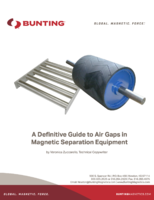NIST Research measures stress in new materials.
Share:
Press Release Summary:
Utilizing special X-ray machine at Argonne National Laboratory, team of scientists has taken a major step toward measuring stress in cutting-edge materials. Their work provides the first method for measuring all varied pushing, pulling, and twisting at tiny scales within a solid object. Approach has allowed them to measure "tensor," or full set of stresses, in cubic sections just 250 nm per side—the level of resolution scientists need to predict material’s performance.
Original Press Release:
NIST Takes (Some of) the Stress Out of Engineering New Materials
New X-ray technique permits measurement of stresses in advanced materials, such as this additive-manufactured sample of a nickel-based super alloy, roughly 22 micrometers across. Colors of individual grains indicate their different crystallographic orientations. Stress tensor measurements from eight of these grains indicate stresses almost strong enough to tear the sample apart from the inside.
Stress: What does it feel like to you? Maybe like pressure from multiple directions, trying to push and pull and twist you all at once? If so, you’ve described it the same way engineers describe stress on a solid object—and a team including scientists at the National Institute of Standards and Technology (NIST) has taken a major step toward measuring it usefully in cutting-edge materials.
Their work provides the first method* for measuring all the varied pushing, pulling and twisting at tiny scales within a solid object—a long-standing goal. It’s an important step toward the ultimate goal of predicting a material’s capabilities directly from its composition and internal structure.
The performance of a novel material—such as 3-D printed metals or lightweight materials for future cars —depends largely on how well it can handle stress. But gauging a material’s capabilities isn’t as simple as taking a chunk of it, pushing and pulling on the whole thing, and measuring its strength in each direction. The chunk’s interior can be extremely complicated with large stresses that change drastically from place to place. So materials scientists need to use a special X-ray machine at Argonne National Laboratory to look within the chunk, one tiny piece at a time, with each piece smaller than a cubic micrometer.
As you might imagine, that in itself is a pretty stressful job.
“Most times when I examine a new material, I don’t get any sleep that night,” says NIST’s Lyle Levine. “It can take 24 hours or more of continuous work to characterize a single tiny sample.”
It used to be even harder. In 2006 the team found** a way to X-ray samples, but they could only measure the stress in a single direction, and only by hand. Their latest research builds on the 2006 findings and permits them to measure all the stresses in every direction, thanks to two innovations they made in the use of light and shadow.
First, it turns out that X-rays will reflect off of a material in different directions if you vary their wavelength. By doing so, the team can generate different reflections that reveal the stress in one direction and then another—all without changing the sample’s position. They also found that they could get a clearer view by moving a small wire through the X-ray beam to block out distracting reflections that often come from other places in the sample.
Their approach has allowed them to measure the “tensor,” or full set of stresses, in cubic sections just 250 nanometers per side—the level of resolution that materials scientists need to be able to predict a material’s performance. (Each section’s volume is about 8 million times smaller than a cube with the thickness of a human hair.)
What materials physicists like Levine want next—aside from sleep—is some automated process to make all these measurements quickly. Levine thinks they know how to make them more than 7,000 times faster, but warns that you shouldn’t hold your breath waiting. Creating the necessary technology may be as much as 10 years of work away.
“We now have a method for measuring the full tensor,” Levine says. “But it’s still slow and difficult. So the next step is to develop new technology that will make it much faster and easier for people to use.”Â
Which would—you guessed it—make life for materials scientists way less stressful.
*L. Levine, C. Okoro and R. Xu. Full elastic strain and stress tensor measurements from individual dislocation cells in copper through-Si vias. IUCrJ (International Union of Crystallography Journal), doi:10.1107/S2052252515015031, Nov. 2015 issue.
**See http://www.nist.gov/mml/msed/new-080306.cfm
The National Institute of Standards and Technology (NIST) is an agency of the U.S. Department of Commerce.




